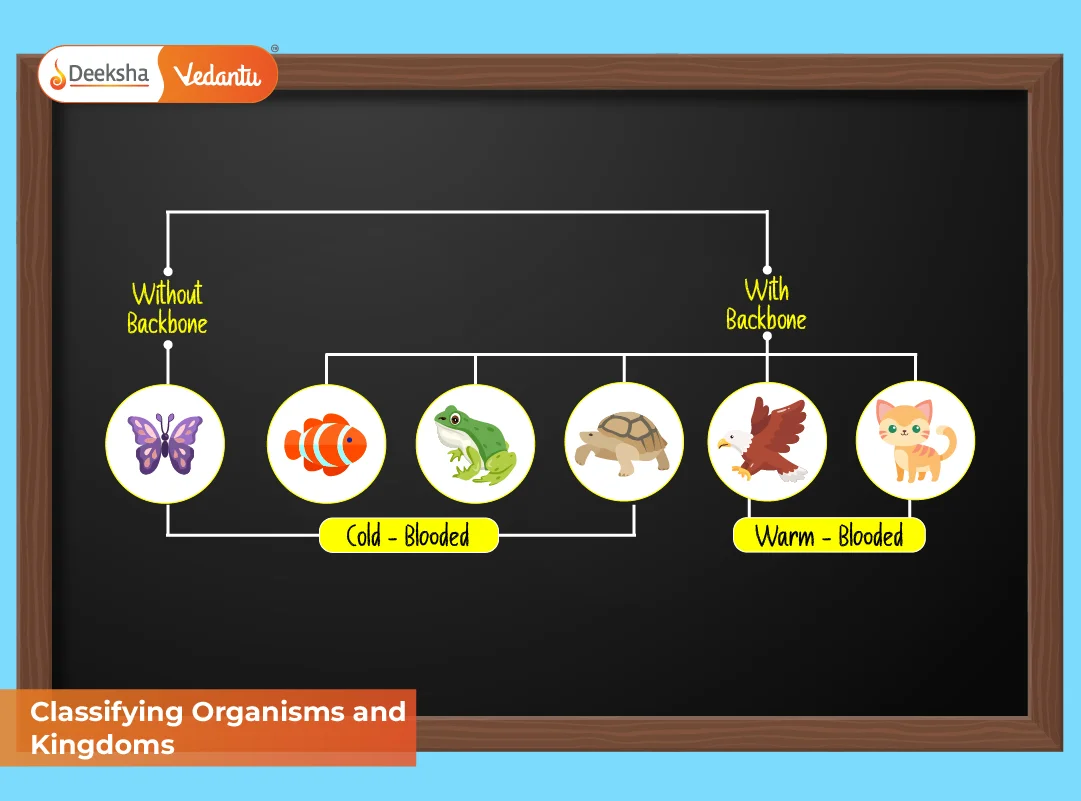In biology, classification is a fundamental method used to organize the overwhelming diversity of life on Earth. Known as taxonomy, this system allows scientists to name, categorize, and understand organisms based on common traits and evolutionary ancestry. Without classification, studying and sharing biological data would be a chaotic task. From the simplest bacteria to the most complex mammals, each organism has its place in the grand system of life.
This guide offers an in-depth understanding of the classification of organisms, the logic behind the five kingdom classification, and how taxonomy in biology helps us understand the vast kingdoms of life through cell types, nutrition, structure, and behavior.
Why Classify Organisms?
Currently, over 8.7 million species are estimated to exist on Earth, although many remain undiscovered or poorly understood. Classification provides a structured framework for cataloging this immense biological diversity.
Core Benefits of Classification:
- Brings order and structure to the biological world
- Allows accurate identification and naming of organisms
- Helps in predicting characteristics shared among related species
- Reveals evolutionary connections and ancestry
- Enhances scientific communication across regions and languages
- Aids in conservation planning, agriculture, and medical research
- Organizes data for education and ecological studies
🔗 Explore biodiversity and why it matters
What is Taxonomy in Biology?
Taxonomy is the science of classifying organisms systematically based on similarities, differences, and evolutionary history. It also involves assigning each organism a scientific name using binomial nomenclature.
Historical Evolution of Taxonomy:
- Aristotle classified organisms into plants and animals.
- Carl Linnaeus introduced binomial nomenclature and the hierarchical structure of classification.
- Modern taxonomy integrates molecular biology, genetics, and phylogenetics.
Taxonomic Hierarchy:
Organisms are grouped from broad to specific ranks:
- Kingdom
- Phylum (Division in plants)
- Class
- Order
- Family
- Genus
- Species
Mnemonic: King Philip Came Over For Good Soup
Binomial Nomenclature:
- Each species has a two-word Latin name: Genus + species
- Always italicized: Homo sapiens (modern human)
- Introduced by Linnaeus for universal consistency
Basis of Classification of Organisms
Organisms are classified based on several key biological characteristics:
- Cell type: Prokaryotic (no nucleus) or Eukaryotic (true nucleus)
- Number of cells: Unicellular or Multicellular
- Mode of nutrition: Autotrophic (self-synthesizing) or Heterotrophic (feeding on others)
- Presence of cell wall: Composition (cellulose, chitin, or absent)
- Reproductive method: Sexual or Asexual
- Body organization: Tissue complexity and presence of organs
🔗 Learn about the difference between Prokaryotic and Eukaryotic cells
The Five Kingdom Classification
In 1969, R.H. Whittaker introduced the five kingdom classification to better reflect the natural grouping of organisms based on cell structure, organization, nutrition, and reproduction. This model replaced earlier two and three-kingdom systems.
The Five Kingdoms:
| Kingdom | Cell Type | Cellularity | Nutrition Type | Example Organisms |
| Monera | Prokaryotic | Unicellular | Autotrophic/Heterotrophic | Bacteria, Blue-green algae |
| Protista | Eukaryotic | Unicellular (mostly) | Autotrophic/Heterotrophic | Amoeba, Paramecium |
| Fungi | Eukaryotic | Multicellular (mostly) | Heterotrophic (Saprophytic) | Yeast, Mushrooms |
| Plantae | Eukaryotic | Multicellular | Autotrophic (Photosynthetic) | Trees, Ferns |
| Animalia | Eukaryotic | Multicellular | Heterotrophic (Ingestion) | Humans, Insects, Birds |
This classification not only groups organisms based on physical similarities but also on evolutionary relationships and ecological roles.
Detailed Look at Each Kingdom
1. Kingdom Monera
- Prokaryotic, simplest and oldest life forms
- Cell wall made of peptidoglycan
- May be autotrophic (e.g., cyanobacteria) or heterotrophic
- Reproduce by binary fission
- Many are decomposers or nitrogen fixers
- Some are pathogenic
Examples: E. coli, Streptococcus, Cyanobacteria
2. Kingdom Protista
- Often called the ‘junk drawer’ of classification
- Eukaryotic, mostly unicellular
- Aquatic or moist environments
- Exhibit plant-like (algae), animal-like (protozoa), or fungus-like (slime molds) characteristics
- Reproduce sexually or asexually
Examples: Euglena, Amoeba, Plasmodium
3. Kingdom Fungi
- Mostly multicellular, eukaryotic, heterotrophs
- Cell wall made of chitin
- Feed by extracellular digestion (secreting enzymes into food)
- Major decomposers in ecosystems
- Reproduce by spores, both sexually and asexually
🔗 Dive deeper into the fascinating world of Fungi
Examples: Mushrooms, Yeast (Saccharomyces), Bread mold (Rhizopus)
4. Kingdom Plantae
- Eukaryotic, multicellular autotrophs
- Use chlorophyll for photosynthesis
- Cell walls made of cellulose
- Reproduce via seeds, spores, or vegetative propagation
- Key producers in terrestrial ecosystems
Examples: Neem tree, Algae, Grass, Ferns
5. Kingdom Animalia
- Multicellular, eukaryotic, heterotrophs
- No cell wall, internal digestion
- Advanced organ systems (nervous, circulatory, etc.)
- Show locomotion, mostly sexual reproduction
Examples: Human (Homo sapiens), Dog (Canis lupus), Butterfly
Cells as the Basis of Classification
Cellular structure is one of the most crucial factors in classification.
Prokaryotic Cells:
- No true nucleus
- DNA floats freely in cytoplasm
- No membrane-bound organelles
- Example: Bacteria
Eukaryotic Cells:
- True nucleus
- Complex structures with organelles like mitochondria, Golgi apparatus
- Found in all kingdoms except Monera
🔗 Know more about cells and their structure
Kingdoms and the Ecosystem
Each kingdom plays a unique role in maintaining ecological balance:
- Monera: Nitrogen fixation, decomposition
- Protista: Planktonic base of aquatic food chains
- Fungi: Decompose dead matter and recycle nutrients
- Plantae: Oxygen production, food via photosynthesis
- Animalia: Consumers at various trophic levels
🔗 Understand ecosystem components in detail
Sample Problem: Kingdom Identification
Question: Which kingdom does a unicellular, eukaryotic, photosynthetic organism belong to?
Answer: Protista (Euglena)
Explanation: It has a nucleus (eukaryotic), is unicellular, and can photosynthesize.
Additional Systems of Classification
Although the five-kingdom system is widely used, some scientists now prefer the three-domain system, introduced by Carl Woese.
Domains in the Three-Domain System:
- Bacteria: True bacteria
- Archaea: Ancient prokaryotes with unique biochemistry
- Eukarya: All eukaryotic organisms
This model is based on genetic and molecular data and reflects evolutionary relationships more accurately.
FAQs
Q1. What is the importance of taxonomy in biology?
It provides a universal framework for identifying, naming, and studying organisms based on evolutionary relationships.
Q2. Why are prokaryotes placed in a separate kingdom (Monera)?
They differ fundamentally in structure, lacking a true nucleus and organelles.
Q3. Is yeast a fungus or protist?
Yeast is a unicellular fungus and is classified under Kingdom Fungi.
Q4. How do algae differ from plants?
Algae may be unicellular or simple multicellular and often lack true roots, stems, and leaves, unlike higher plants.
Q5. What are the five kingdoms of life?
Monera, Protista, Fungi, Plantae, and Animalia.
Q6. Is virus a part of five kingdom classification?
No. Viruses are non-living outside a host and are not classified under any kingdom.
Q7. How does molecular biology help in classification?
DNA sequencing, protein structure, and molecular markers help establish evolutionary links.
Q8. Why do some organisms show characteristics of multiple kingdoms?
Transitional or ambiguous organisms like Euglena show traits from both Plantae and Protista, challenging classification.
Conclusion
Conclusion
Classification allows scientists to navigate the enormous variety of life efficiently and meaningfully. It is an evolving science that adapts as we learn more through genetics, paleontology, and microbiology. From school textbooks to advanced research, the five kingdom classification and taxonomy in biology continue to shape our understanding of Earth’s kingdoms of life.
Table of Contents










Get Social